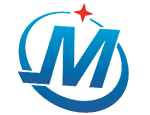In the world of plumbing, the role of various fittings cannot be overstated. Among the most essential fittings used in piping systems are pipe adaptor fittings and pipe reducer threaded. While they may seem similar, these two components serve distinct functions that are critical to the proper functioning of pipelines in industries ranging from construction to manufacturing.
Key Differences Between Pipe Adaptors and Reducers
1.Functionality in Pressure Management:
Pipe Adaptors: These fittings are primarily used to create connections between pipes of different materials, threading types, or sizes without altering the flow dynamics. Pipe adaptors do not significantly affect pressure levels within the pipeline system because their main function is to ensure compatibility between dissimilar pipes. They are often used in situations where the materials of the pipes must be matched (e.g., metal to plastic).
Pipe Reducers: In contrast, pipe reducers play a critical role in controlling and managing pressure within a piping system. By reducing the diameter of the pipe, they help adjust the flow rate and pressure, ensuring that the system maintains optimal operational conditions. When fluid or gas passes through a reducer, it may experience an increase in velocity but a decrease in pressure, making it an essential component for systems that require flow rate control and pressure regulation.
2.Installation and Space Requirements:
Pipe Adaptors: These fittings are generally easier to install and require less space, as they only serve to connect pipes of varying types and sizes. The focus is more on ensuring a proper connection rather than managing the flow or pressure dynamics of the system. In residential and small-scale industrial applications, pipe adaptors are often more flexible in terms of installation space and ease of fitting.
Pipe Reducers: Reducers, on the other hand, require more precise installation to ensure the smooth transition of the flow and proper alignment of the pipes. The need to decrease the diameter of a pipe often results in a larger fitting size, requiring more space within the piping system. This makes reducers more suitable for applications where precise flow control and efficient space management are critical, especially in larger industrial systems.
3.Impact on Flow Characteristics:
Pipe Adaptors: Since pipe adaptor fittings simply join pipes of different types or sizes, they do not significantly affect the flow characteristics within the pipeline. Their main role is to ensure that two distinct sections of a pipeline can be properly connected, making them an ideal choice when the focus is on maintaining the integrity of the pipeline without altering the flow dynamics.
Pipe Reducers: Pipe reducers have a direct impact on the flow characteristics by reducing the diameter of the pipe. This alteration in the diameter can lead to changes in the velocity and pressure of the fluid passing through the system. In many cases, reducers are carefully designed to manage these flow changes, especially in systems where fluid dynamics must be controlled. For example, in water or gas pipelines, reducers ensure that the system maintains the correct flow velocity and pressure, optimizing efficiency and performance.
Post time: Feb-18-2025
